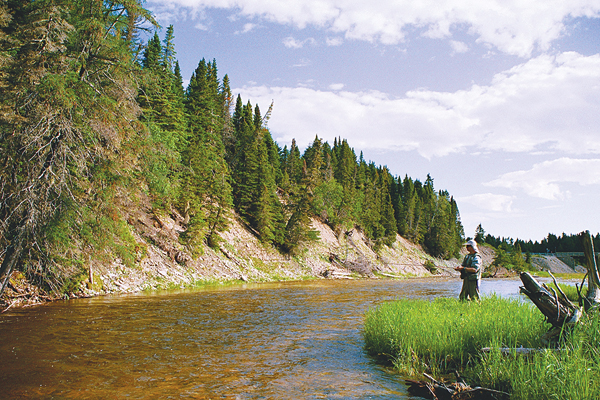International effort rewrites earth’s history
Photo: Public domain wikipedia commons.
Researchers from the University of Ottawa and University of Strasbourg in France have rewritten the story on the second-largest mass extinction in Earth’s history, an event that wiped out about 85 per cent of life on Earth at the time.
The researchers have proven that this mass extinction was caused by multiple glacial events over an extended period of time.
The Project
André Desrochers, a professor from the Department of Earth Sciences at the U of O and a thirty-year veteran in the field of paleogeology (the study of geological history and earth’s origins) lead the research team from Ottawa.
They divided up the project, with the U of O researchers analyzing sediment from Anticosti Island while the Strasbourg team worked on a site in Morocco. Located in the St. Lawrence River, Anticosti Island has a 600km coastline, providing abundant sediment records.
Due to continental drift, Morocco was situated near the South Pole 444 million years ago at the time of the mass extinction, while Anticosti Island was located near the equator.
These two locations were important because “they are exceptionally well exposed…It’s like a book,” said Desrochers. “You have not only every page you (have) every line of the story.” Being exposed means that the rock formations can be more easily examined and analyzed by geologists.
The Result
By comparing the sediment levels of Anticosti with corresponding levels of glacier formation in Morocco, the teams were able to show that the glaciers not only formed at the same time as the sea levels dropped but that they were the cause of the drop. “So each time there was a glacial deposit in Morocco we record(ed) a sea level fall on Anticosti.”
This process of glaciers forming and melting happened numerous times at the end of the Ordovician period, 444 million years ago. The massive loss of life was a result of the repeated nature of these glaciations, not due to a single glacial period as previously believed.
The mass extinction occurred in two phases, according to Desrochers, with the first phase being associated with the onset of glaciation, while “the second phase of extinction has been associated with the end of glaciation.”
The first phase signified a loss of “ecospace,” said Desrochers, as the glaciers formed and drew water from the oceans. That second phase came when the glaciers melted and the melted ice water tainted the environment that marine life had become adapted to.
What’s next?
Desrochers isn’t finished yet with Anticosti Island, as he hopes to further examine the Ordovician-Silurian boundary in the next five years.
He hopes to include more students in his research, to help them gain the skills necessary for entry into the workforce.
“The overall goal of my research program,” said Desrochers, “is to answer 21st century questions about the ocean-atmosphere-biosphere system during one of the most dynamic intervals in Earth history.”






